One of the most important factors in selecting the optimum flat or low-slope commercial roof insulation is designing to the desired thermal efficiency. R-value is a measurement to quantify the insulating properties of a building material. The highest R-value per inch is the best, and this helps determine flat roof insulation thickness for building regulations. Understanding relative R-values will help rank the comparison of various materials choices.
Let’s take a look at how the most common types of flat roof insulations rank according to R-value.
1. Polyurethane Roof Insulation R = 6.6
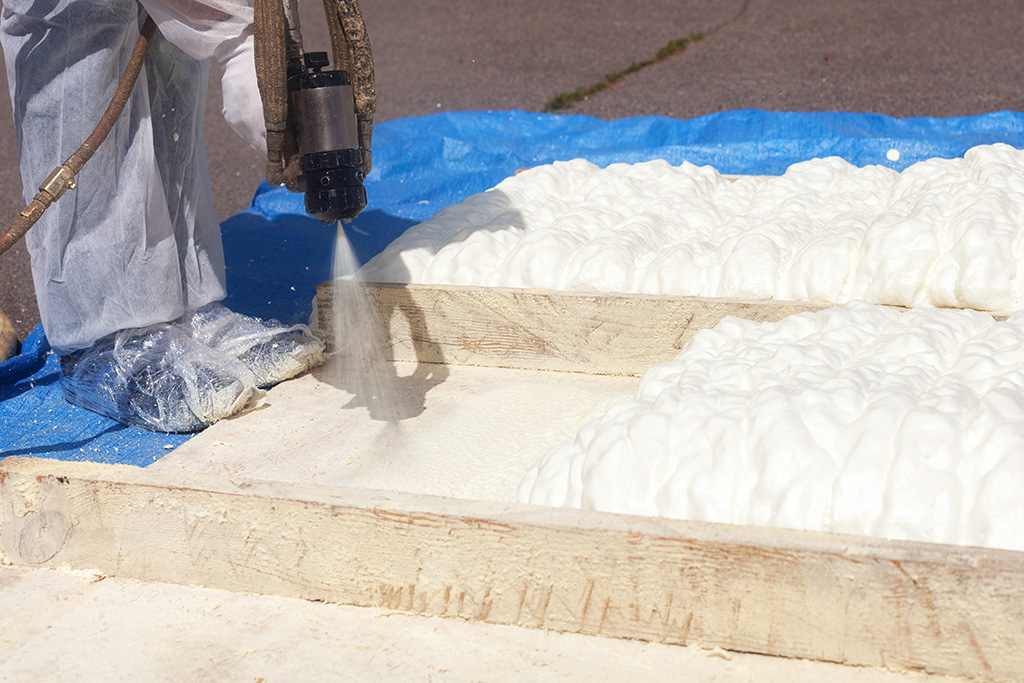
Polyurethane in sprayed-on foam is a high R-value choice for flat roof insulations. The American Chemistry Council Center for the Polyurethanes Industry reports R-values of up to 6.6 per inch. For commercial flat roofing, either 1-component or 2-component spray polyurethane foam is commonly used as well as insulated metal panels for the building envelope. Cold storage buildings with freezers or coolers often utilize polyurethane insulated metal panels.
There are several advantages to polyurethane: structural performance, dimensional stability and moisture resistance. The major benefit of spray polyurethane foam (SPF) is that it can conform to irregular surfaces on a wide variety of substrates. There is typically long-term stability of the R-value as well as high fire resistance. Polyurethane does have a narrower window of application temperature and humidity limitations in some climate conditions.
Note: This insulation cannot be used as a part any membrane roofing system – SBS, APP, TPO, PVC, EPDM, KEE. Also, when a SPUF roof needs to be replaced, it is very difficult to remove from the structure due to its inherent adhesive and physical properties.
2. Polyisocyanurate Roof Insulation R = 6.8*
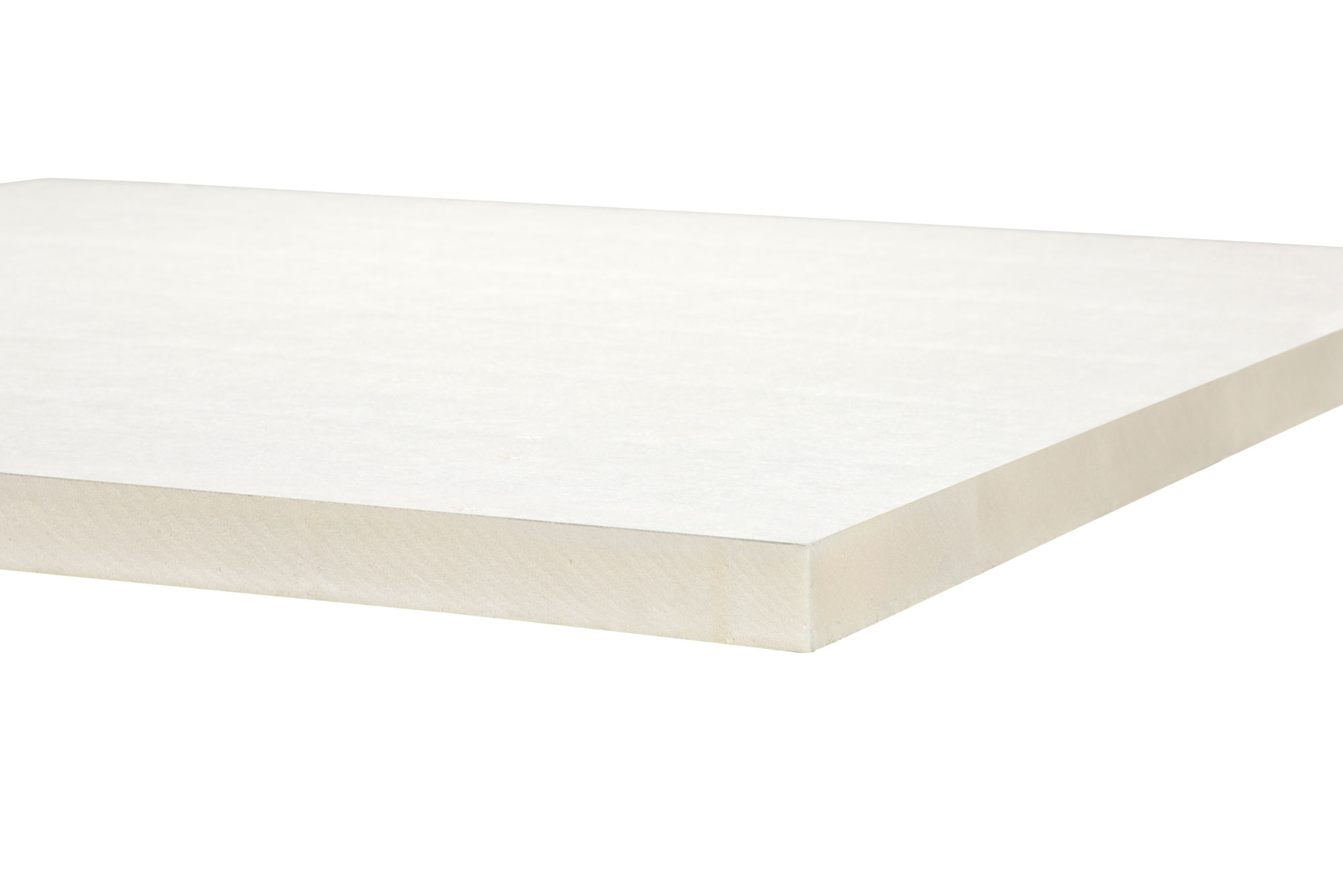
Polyisocyanurate (polyiso) is closed-cell foam bonded to various facers, such as glass or foil. The blowing agents used to manufacture the product have evolved over time to meet environmental goals. Manufacturers certify their EPA-compliant blowing agents as not having any CFCs or HCFCs to meet zero ozone depletion potential (ODP) roof insulation standards.
Polyiso is the only foam plastic insulation product for direct application to steel decks to achieve FM Approval for Class 1 Roof Systems. It is also classified by UL for direct-to-steel deck insulation under both single-ply and asphaltic roof membranes.
The polyiso industry has established a standard called “LTTR” — Long Term Thermal Resistance — that indicates how polyiso will insulate over time; it is essentially an aged R-value.
As an example, the R-value of a foil-faced polyisocyanurate panel produced with pentane ranges from an initial R-value of 6.8 per inch to 5.7 per inch as projected over time. Polyisocyanurate foam board roof insulation is one of the best roofing insulations and is one of the top choices for very high thermal efficiency. Polyiso is available for flat roof insulation systems, and it also can be supplied as tapered insulation board for flat roofs.
Designers who pursue certifications under green building rating systems, such as LEED®v4, would want to review adding insulation to a flat roof, such as nonhalogenated polyisocyanurate roof insulation. These formulations do not have flame-retardant chemicals that may adversely affect the environment.
Polyiso roof insulation can also be produced at high density (HD) to become a high-compressive strength (80 psi and higher) cover board. HD polyiso coverboards help prolong the service life of a roofing system by providing protection from foot traffic and third-party damage without adding significant weight to the structure. These roof cover boards are resilient and lightweight.
The Polyisocyanurate Insulation Manufacturers Association (PIMA) does outstanding work in researching the latest trends in polyiso advances and is a great support for the insulation industry.
*Initial, not LTTR aged value, to make an effective comparison with other products
3. High-Density Extruded Polystyrene (XPS) Roof Insulation R = 5
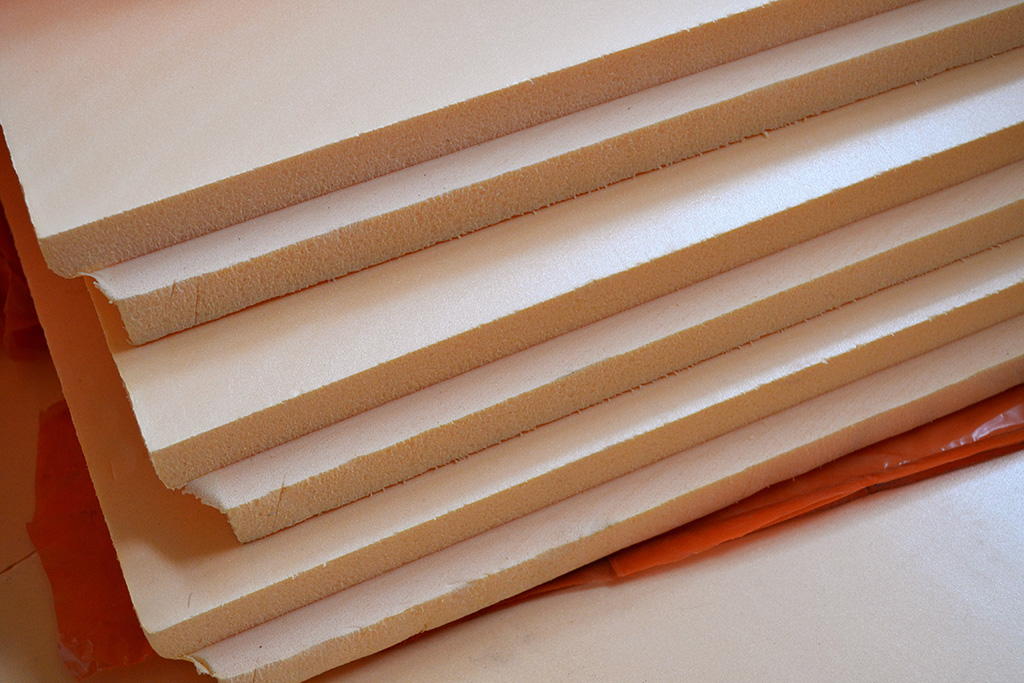
With an R-value of approximately 5 per inch, extruded polystyrene (XPS) is created utilizing an extrusion process to produce closed-cell rigid foam insulation with polystyrene polymer. Many manufacturers add a dye to the formulation to add a unique colouration, typically pink, green or blue to distinguish the product brand.
Most XPS is used for wall and below-grade applications. For commercial roofing, it is most commonly specified for Inverted Roof membrane Assembly (IRMA) or Protected Membrane Roof (PMR) systems. Extruded polystyrene is usually ranked in the middle of cost vs. R-value in terms of cost/benefit evaluation of flat roofing materials.
It is vulnerable to solvent-based adhesives and hot asphalt, and its use in PMR systems requiring ballast can make structural weight of the assembly an issue.
4. High-Density Expanded Polystyrene (EPS) Roof Insulation R = 4.6
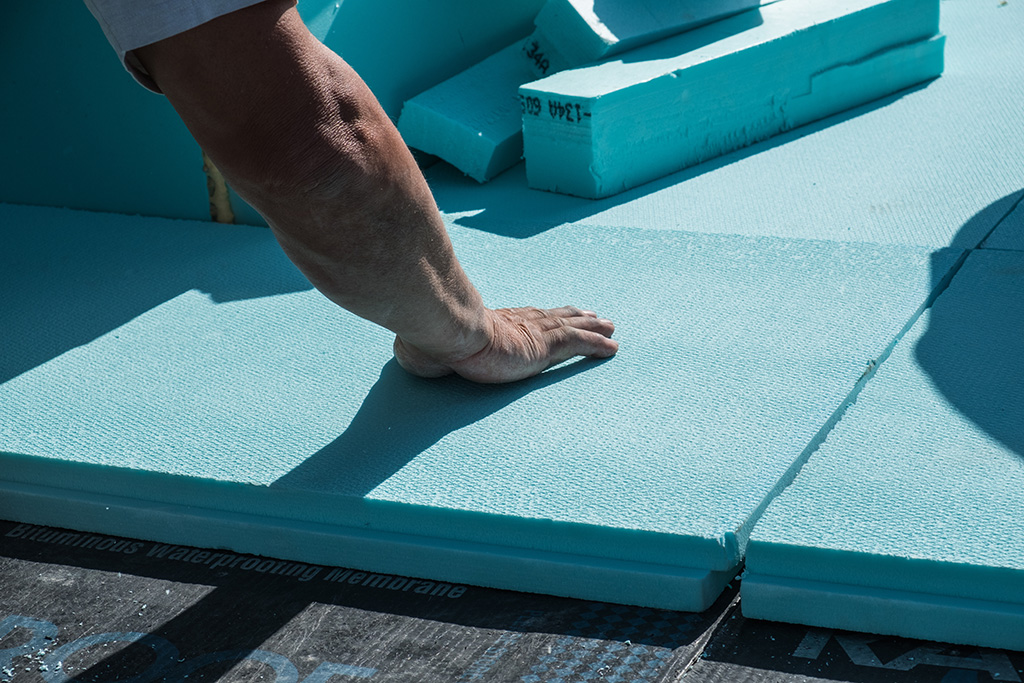
Expanded polystyrene (EPS) is made from the same base polystyrene resins as XPS, but the manufacturing process is different, resulting in beads that are formed and cut into different sizes and shapes or molded. High-density products have an approximate R-value of 4.6 as a relative comparison.
Contractors like to install EPS as it can be cut easily to meet site conditions, and it is lightweight. Theoretically, it has a more stable R-value over time as there are no chemical blowing agents that can outgas. There are no current studies that can confirm this attribute.
EPS has several disadvantages, however. It is combustible, will absorb water, can shrink and warp with high temperature exposure, and is not compatible with petroleum-based products, such as solvents, coatings and adhesives. In addition, foot traffic on the roof can damage the material.
5. Glass Fiber and Mineral Fiber Batts and Panels R = Variable by Manufacturer
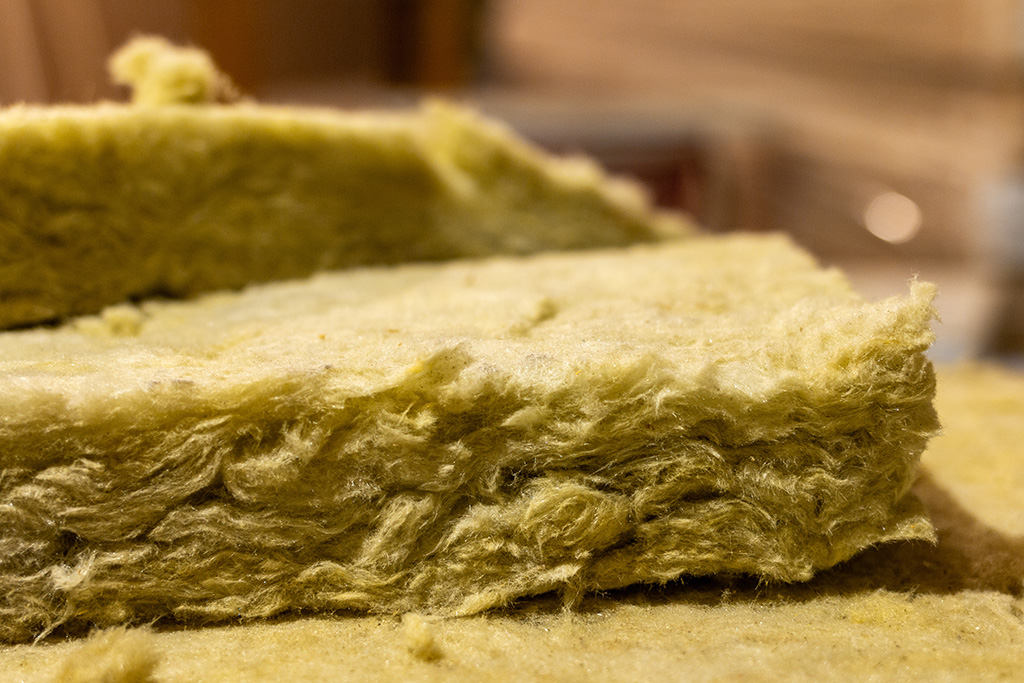
The commercial roofing industry phased out rigid fiberglass two-by-four panels as single-ply roofing systems became a larger share of the market. Soft underfoot, fiberglass was not recommended for EPDM, PVC or TPO systems. Traditionally, fiberglass sheets were used as a substrate for hot roofing systems, and they had several advantages: They provided high fire resistance and flexibility, and they were chemically inert and resistant to mold growth.
There were few suppliers dedicated to market commercial roofing systems with the necessary resources to support various code testing in contemporary assemblies. Currently, fiberglass rolls can be purchased for specialized uses, such as metal building insulations. Additionally, there are formaldehyde-free mineral wool options for certain applications.
6. Perlite Board R = 2.7
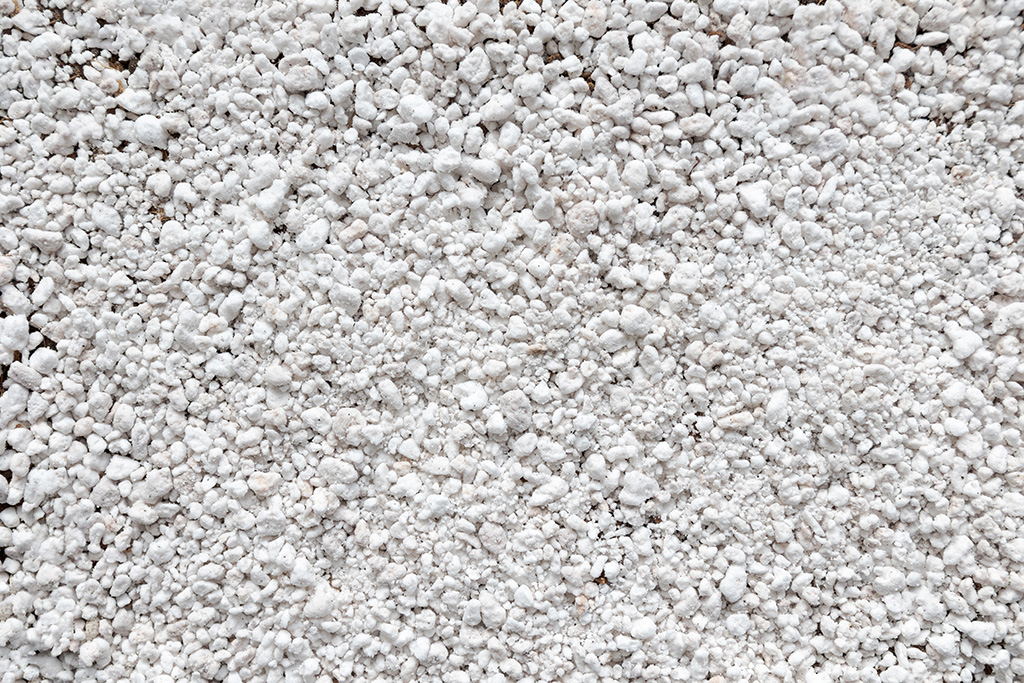
Considered a “low thermal insulation” in the manufacturing process, it is typically combined with binders and reinforcing cellulosic fibers. In production since the late 1950s, perlite was considered the pioneer environmental flat roof insulation product due to its high recycled content of paper waste, often manufactured with used phone books. It is economical and has a stable R-value. High-density versions of the product can be installed over wide flutes with metal deck spans up to 2 1/2 inches. With hot roofing systems, perlite is available in a number of composite construction boards, including OSB and gypsums.
Perlite boards can rot when wet and need surface treatments or coatings to prevent excessive absorption of asphalt during installation. Again, with the advent of single-ply roofing systems and their increasing specifications, this product is losing favor as a choice in commercial roofing.
7. Insulations and R-value
R-value is but one of many criteria in the selection of flat roofing insulations for commercial applications. Insulation is just one component in a full roofing assembly. Other determining factors can be:
- Compliance with ASHRAE Standard 90.1, International Energy Conservation Code (IECC), International Building Code (IBC), International Green Construction Code (IgCC), Canadian provinces and territory standards.
- UL or FM requirements.
- ASHRAE Standard 189.
- S. Green Building Council LEED Rating System.
For more information on roof insulation, please see our comprehensive guide to polyiso insulation.
